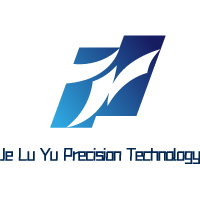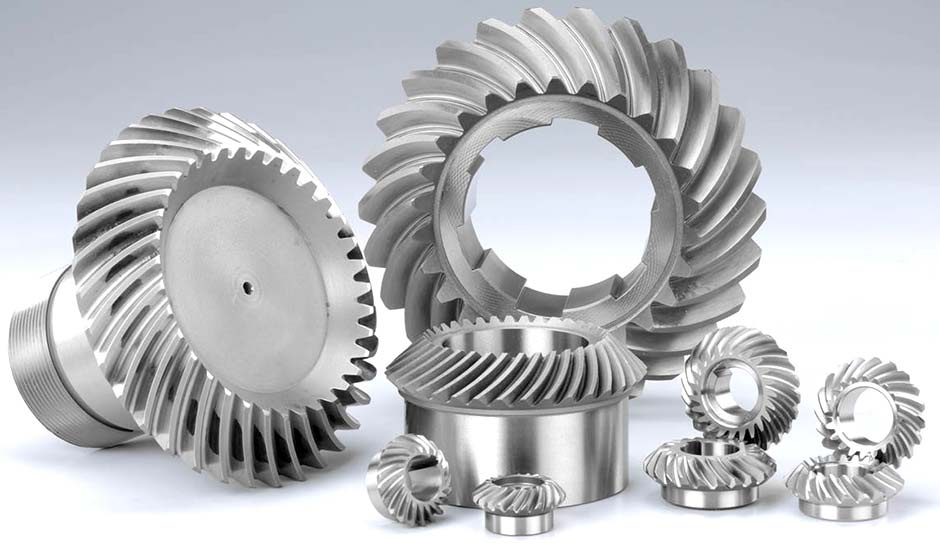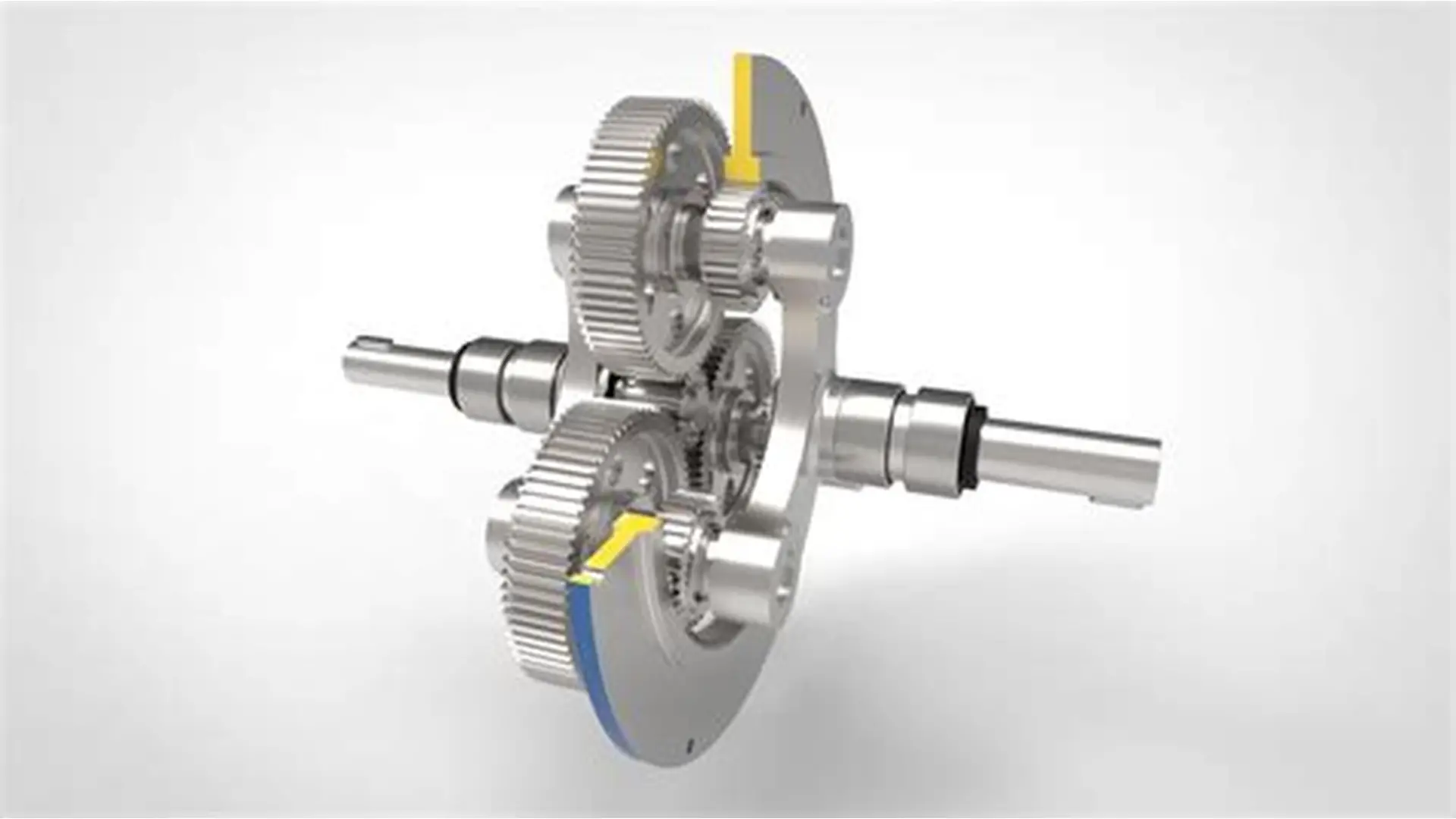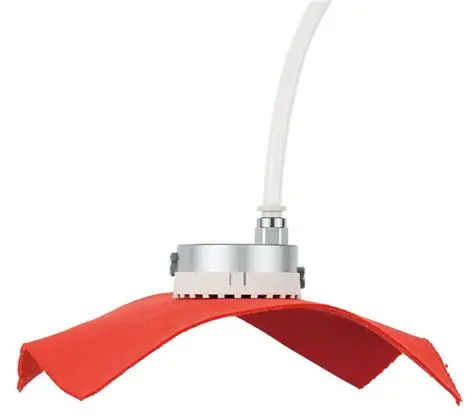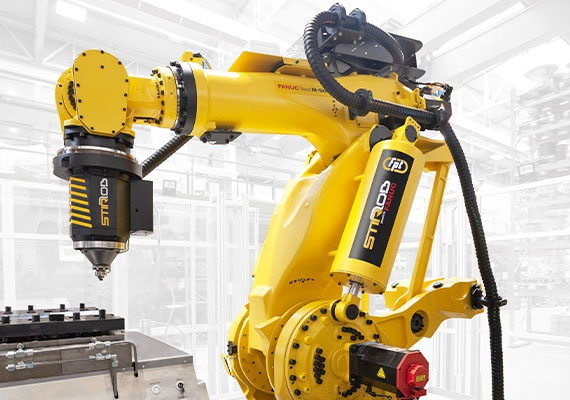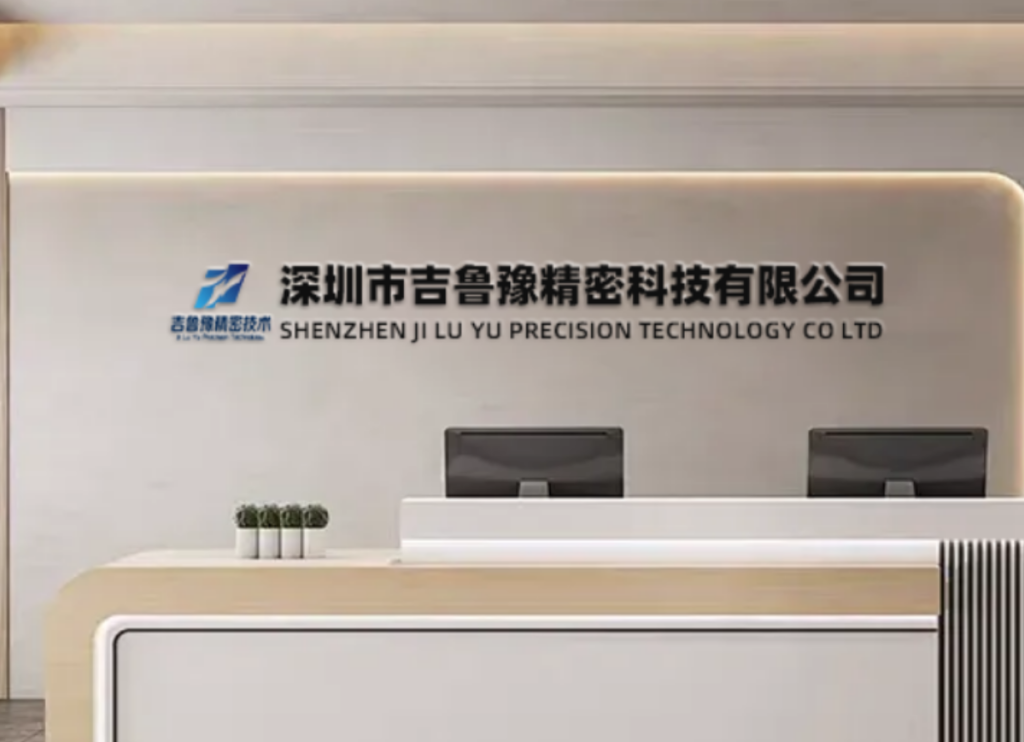Precision Angular Transmission: The Critical Role of Low Backlash Bevel Gears in Advanced Robotics
In the sophisticated world of precision robotics and motion control systems, where positional accuracy and repeatability directly determine system performance, the implementation of Low Backlash Bevel Gear technology represents a fundamental engineering achievement. These specialized power transmission components enable precise torque transmission between non-parallel intersecting shafts while maintaining exceptional positional accuracy through minimized angular clearance. At JLYPT, our extensive experience in precision gear manufacturing has established us as leaders in producing Low Backlash Bevel Gear systems that meet the exacting requirements of modern robotic applications across medical, aerospace, and industrial automation sectors.
This comprehensive technical examination explores the engineering principles, manufacturing methodologies, and application considerations that define high-performance Low Backlash Bevel Gear systems. We will investigate the complete technical spectrum of bevel gear technology, from fundamental kinematic theory to advanced manufacturing techniques, providing engineers and manufacturers with detailed insights into optimizing angular power transmission for precision applications.
Fundamental Kinematics of Bevel Gear Systems
Understanding the geometric and kinematic principles of bevel gear systems is essential for appreciating their significance in precision motion control applications. Low Backlash Bevel Gear systems operate on complex three-dimensional contact mechanics that demand exceptional manufacturing precision:
-
Spherical involute tooth geometry: Unlike parallel shaft gears, bevel gears employ spherical involute tooth profiles that maintain proper conjugate action throughout the tooth engagement while accommodating the angular relationship between shafts. This complex geometry requires sophisticated mathematical modeling and precision manufacturing to achieve optimal performance.
-
Tredgold’s approximation methodology: This engineering approach enables the representation of bevel gear teeth as equivalent spur gear teeth for calculation purposes, simplifying the design process while maintaining acceptable accuracy for most engineering applications.
-
Instantaneous contact pattern analysis: The theoretical line contact in perfect bevel gears transforms into elliptical contact patterns under load, with optimal patterns centered on the tooth flank to ensure even load distribution and minimal stress concentration.
-
Sliding velocity characteristics: Bevel gears exhibit complex sliding velocities along the tooth profile, significantly influencing efficiency, wear patterns, and thermal generation. Proper tooth profile modifications can optimize these sliding characteristics for specific application requirements.
The practical implementation of these kinematic principles in Low Backlash Bevel Gear systems requires sophisticated design methodologies and manufacturing capabilities to achieve the micron-level accuracies necessary for precision robotic applications.
Advanced Design Engineering for Minimal Backlash
The engineering of Low Backlash Bevel Gear systems involves multiple critical design considerations specifically focused on minimizing angular clearance while maintaining optimal performance:
1. Tooth Profile Optimization Strategies
-
Profile shift modifications: Strategic alteration of the reference profile distance from the pitch cone apex enables optimization of tooth strength, contact ratio, and backlash control without compromising gear mesh quality.
-
Lengthwise crown modification: Controlled barreling of the tooth profile in the lengthwise direction compensates for misalignment, load-induced deflections, and thermal expansions that could otherwise increase effective backlash during operation.
-
Pressure angle optimization: Selection of non-standard pressure angles (frequently 20°-25°) provides improved torque transmission capability and reduced sensitivity to center distance variations that affect backlash.
2. Precision Bearing Arrangement Engineering
-
Preloaded bearing configurations: Angular contact bearings arranged in duplex or triplex configurations with precisely controlled preload eliminate axial play that contributes to system backlash.
-
Stiffness-optimized housing design: Finite element analysis (FEA) optimized housing structures minimize deflection under load, maintaining precise gear alignment and consistent backlash characteristics.
-
Thermal expansion compensation: Strategic material selection and dimensional planning accommodate differential thermal expansion between components, maintaining consistent backlash across operating temperature ranges.
3. Advanced Backlash Control Mechanisms
-
Eccentric bearing adjustment systems: Precision machined eccentric bearing seats enable micron-level adjustment of gear mesh position for optimal backlash setting during assembly.
-
Axial preload adjustment features: Threaded adjustment mechanisms with locking features allow precise control of gear axial position, fine-tuning the mesh engagement to achieve target backlash values.
-
Dual-path torque splitting designs: Innovative gear arrangements that divide torque transmission across multiple paths, effectively averaging out individual tooth-to-tooth variations that contribute to overall system backlash.
Manufacturing Excellence through Precision CNC Machining
The exceptional performance of Low Backlash Bevel Gear systems is fundamentally dependent on manufacturing precision and process control. At JLYPT, our multi-axis CNC machining capabilities enable us to achieve the exacting tolerances required for high-performance bevel gear systems:
Advanced Gear Manufacturing Processes:
-
Multi-axis CNC gear cutting: 5-axis simultaneous machining centers employing custom-ground form cutters produce precise tooth geometries with profile deviations less than 5 microns and lead deviations under 8 microns per 100mm.
-
Continuous indexing generation methods: Modern gear generators using face mill or face hob cutting techniques create optimized tooth surfaces with controlled contact patterns and minimal surface roughness.
-
Post-hardening precision finishing: Advanced grinding, honing, and lapping processes correct heat treatment distortions and achieve final tooth geometry with surface finishes of Ra 0.2-0.4 μm, essential for smooth operation and minimal noise.
Precision Component Machining:
-
Multi-pallet machining systems: Automated pallet-changing machining centers enable complete component processing in single setups, ensuring critical geometric relationships and minimizing cumulative tolerance stack-ups.
-
In-process measurement integration: On-machine probing and laser measurement systems provide real-time feedback for process control, ensuring consistent quality throughout production batches.
-
Metrology and quality assurance: Comprehensive inspection using coordinate measuring machines (CMM), gear analyzers, and optical comparators verifies compliance with AGMA 2005 and ISO 1328 standards.
Technical Comparison: Bevel Gear Performance Specifications
The following table provides a detailed technical comparison of bevel gear systems across different precision classes and application requirements.
Table 1: Comprehensive Bevel Gear Performance Specification Matrix
| Technical Parameter | Commercial Grade | Precision Grade | High Precision | Ultra Precision |
|---|---|---|---|---|
| Backlash Range | 10-25 arc-min | 5-10 arc-min | 1-5 arc-min | <1 arc-min |
| Transmission Accuracy | ±15 arc-min | ±8 arc-min | ±3 arc-min | ±1 arc-min |
| Efficiency | 95-97% | 96-98% | 97-99% | 98-99.5% |
| Noise Level | 70-80 dB | 65-75 dB | 60-70 dB | 55-65 dB |
| Surface Hardness | 55-60 HRC | 58-62 HRC | 60-64 HRC | 62-66 HRC |
| Tooth Profile Deviation | 0.015-0.025 mm | 0.008-0.015 mm | 0.004-0.008 mm | 0.002-0.004 mm |
| Tooth Lead Deviation | 0.020-0.030 mm | 0.010-0.020 mm | 0.005-0.010 mm | 0.002-0.005 mm |
| Surface Finish (Ra) | 0.8-1.2 μm | 0.4-0.8 μm | 0.2-0.4 μm | 0.1-0.2 μm |
| Maximum Operating Temperature | 90°C | 100°C | 120°C | 150°C |
| Service Life | 10,000 hours | 15,000 hours | 20,000 hours | 25,000 hours |
| Torsional Stiffness | 10-30 Nm/arc-min | 30-60 Nm/arc-min | 60-100 Nm/arc-min | 100-200 Nm/arc-min |
Material Science and Heat Treatment Technologies
The performance characteristics of Low Backlash Bevel Gear systems are fundamentally dependent on advanced material technologies and thermal processing:
Advanced Material Applications:
-
Case-carburized alloy steels: Materials including 20CrMnTi, 8620H, and 9310 provide exceptional surface hardness (58-64 HRC) with tough, ductile cores resistant to impact loading in demanding applications.
-
Through-hardened specialty steels: Alloys such as 4140, 4340, and 52100 offer consistent material properties throughout the component cross-section, suitable for applications requiring high core strength and simplified heat treatment.
-
Premium vacuum-melted steels: ESR (ElectroSlag Remelted) and VAR (Vacuum Arc Remelted) materials provide superior cleanliness, homogeneity, and fatigue performance for the most demanding applications.
Advanced Heat Treatment Methodologies:
-
Atmosphere-controlled carburizing: Precision carbon potential control creates optimal case depth profiles (typically 0.8-1.5mm) matching specific tooth loading requirements and module sizes.
-
High-pressure gas quenching: Advanced quenching technologies minimize geometric distortion during hardening, reducing subsequent machining requirements and preserving precision geometry.
-
Deep cryogenic treatment: Extended sub-zero processing transforms residual austenite and relieves internal stresses, enhancing dimensional stability and wear resistance.
-
Precision tempering processes: Multiple tempering cycles at precisely controlled temperatures optimize the balance between hardness, toughness, and stress relief for maximum service life.
Strategic Advantages in Precision Robotic Applications
The implementation of Low Backlash Bevel Gear systems in precision robotic applications delivers critical performance advantages:
-
Enhanced positional accuracy: Minimal angular clearance enables precise positioning and repeatability essential for applications requiring accurate path following and endpoint control, with typical improvements of 30-50% compared to standard bevel gear systems.
-
Improved dynamic response: Reduced backlash decreases settling time following direction changes, enabling higher throughput in applications requiring frequent acceleration/deceleration cycles and direction reversals.
-
Superior torque transmission stability: Consistent mesh engagement under varying load conditions ensures stable transmission characteristics, eliminating the non-linear torque transmission associated with significant backlash.
-
Reduced vibration and noise: Precision manufacturing and optimized tooth contact minimize vibration generation and noise emissions, critical for applications in quiet environments or those sensitive to mechanical vibration.
Case Studies: Low Backlash Bevel Gear Applications
Case Study 1: Surgical Robot Articulated Joint System
-
Challenge: A medical device manufacturer required articulated joints for a minimally invasive surgical robot with positional accuracy of ±0.1° and smooth motion transmission at very low speeds. Standard bevel gears exhibited excessive backlash and torque variations that compromised surgical precision.
-
Solution: JLYPT designed and manufactured matched Low Backlash Bevel Gear sets with optimized spiral angles and specialized crown modifications. The gears were manufactured to AGMA Quality 12 standards with backlash maintained at 0.5-1.0 arc-minutes and transmission accuracy of ±0.5 arc-minutes.
-
Result: Achieved surgical instrument positioning accuracy of ±0.08° and eliminated detectable torque variations during slow-speed articulation. The solution enabled smooth instrument motion at speeds as low as 0.5°/second, critical for precise surgical maneuvers.
Case Study 2: Aerospace Satellite Tracking System
-
Challenge: An aerospace contractor needed right-angle drives for satellite communication antenna positioning with absolute positional accuracy of ±0.05° and near-zero backlash under varying thermal conditions (-40°C to +65°C).
-
Solution: We developed a thermal-compensated Low Backlash Bevel Gear system using matched coefficient of thermal expansion materials and specialized tooth profile modifications for thermal stability. The design incorporated preloaded ceramic hybrid bearings and achieved consistent backlash of 0.3-0.8 arc-minutes across the entire temperature range.
-
Result: Maintained positional accuracy of ±0.03° under all operational conditions with no measurable backlash increase at temperature extremes. The solution achieved 99.8% positioning reliability over 50,000 positioning cycles in environmental testing.
Case Study 3: Industrial Articulated Robot Wrist Assembly
-
Challenge: An automotive automation supplier required compact wrist assemblies for painting robots with high torsional stiffness and minimal backlash to minimize overshoot and oscillation during high-speed path following operations.
-
Solution: JLYPT engineered a high-stiffness Low Backlash Bevel Gear system featuring optimized web structures and strategic material removal to maximize stiffness-to-weight ratio. The design achieved torsional stiffness exceeding 80 Nm/arc-min while maintaining backlash under 2 arc-minutes.
-
Result: Reduced path following error by 60% and eliminated end-point oscillation, enabling 25% faster cycle times while maintaining coating quality specifications. The solution achieved 30,000 hours of continuous operation without measurable backlash increase.
Future Development Trajectories in Bevel Gear Technology
The continuing evolution of Low Backlash Bevel Gear technology focuses on several key innovation vectors:
-
Integrated sensor technology: Development of gears with embedded fiber optic sensors or surface-acoustic-wave (SAW) devices for real-time monitoring of load, temperature, and wear during operation.
-
Advanced surface engineering: Implementation of diamond-like carbon (DLC) coatings, nanocomposite treatments, and laser surface texturing to further reduce friction, wear, and noise generation.
-
Additive manufacturing integration: Utilization of metal additive manufacturing for complex internal cooling channels and optimized lightweight structures that cannot be produced with conventional manufacturing methods.
-
Digital twin technology: Creation of virtual gear models that mirror physical performance characteristics, enabling performance optimization and predictive maintenance through operational data analysis.
Implementation Best Practices and Technical Considerations
Successful deployment of Low Backlash Bevel Gear systems requires adherence to established engineering principles:
System Integration Guidelines:
-
Precision alignment procedures: Implementation of laser alignment systems and precision metrology equipment to achieve optimal gear mesh alignment, typically within 0.0005″ TIR for high-precision applications.
-
Proper lubrication management: Selection of specialized synthetic lubricants with extreme pressure (EP) additives and automated lubrication systems to maintain optimal film thickness under all operating conditions.
-
Run-in procedure optimization: Controlled initial operation under progressively increasing loads to optimize tooth contact patterns and stabilize performance before full operational deployment.
Operational Maintenance Protocols:
-
Condition monitoring implementation: Vibration analysis, oil debris monitoring, and thermal imaging to detect incipient failures and schedule maintenance during planned downtime.
-
Preventive maintenance scheduling: Established maintenance intervals based on actual operating conditions rather than fixed time periods to optimize component life and reliability.
-
Backlash monitoring programs: Regular measurement and documentation of backlash values to track performance degradation and plan maintenance before accuracy requirements are compromised.
Conclusion: Precision Engineering for Advanced Motion Control
The development and implementation of advanced Low Backlash Bevel Gear systems represent a critical enabling technology for modern precision robotics and motion control applications. These sophisticated power transmission components combine high angular accuracy, exceptional stiffness, and minimal backlash characteristics that are essential for demanding industrial automation, medical robotics, and aerospace applications.
At JLYPT, our comprehensive approach to Low Backlash Bevel Gear manufacturing encompasses everything from material selection and heat treatment to precision machining and quality assurance. Our engineering expertise and advanced manufacturing capabilities ensure that we deliver solutions that meet the most demanding application requirements while providing exceptional value through extended service life and consistent performance.
Ready to enhance your robotic systems with advanced low backlash bevel gear technology? Contact JLYPT today to discuss your specific application requirements with our engineering team. Our specialists will provide comprehensive technical support and manufacturing solutions tailored to your performance and reliability objectives.
